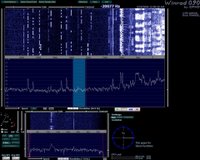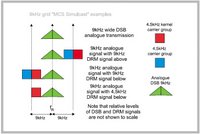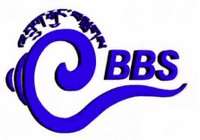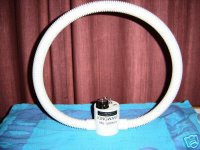 Annunciato pochi mesi fa dai nuovi responsabili di RTVE, l'ente radiotelevisivo pubblico spagnolo, è stato presentato ieri il piano di ristrutturazione di una impresa con oltre 9mila dipendenti (6mila nella televisione, 2.200 nella radio e un migliaio nell'ente pubblico che le gestisce) che ha accumulato un debito di ben 7,5 miliardi di euro. Un piano di razionalizzazione che comporta decisioni spiacevoli anche per gli ascoltatori lontani, che vedranno drasticamente ridotte le possibilità di identificare le emittenti locali di Radio Nacional de España. Fino a oggi, infatti, la catena spagnola todos noticias, Radio 5, offriva frequenti spazi di desconexion dalla rete, in cui le varie regioni proponevano notizie locali dei centri di produzione periferici. Col nuovo piano, questi spazi su Radio 5 non esisteranno più e l'informazione locale, coordinata da Madrid, resta solo sul canale televisivo La 2 e sul canale radiofonico RNE 1, ma solo a mezzogiorno (almeno così si legge sul sito del quotidiano ABC) e, dal lunedì al venerdì nei casi in cui si verificassero importanti eventi di portata regionale. Rebus sic stantibus sarà impossibile distinguere un trasmettitore pubblico spagnolo da un altro, perché le uniche occasioni di rottura del simulcast, restano confinate a una sola rete e in orari praticamente inservibili per chi ascolta da lontano (a mezzogiorno il segnale di cielo, quello che percorre grandi distanze, è virtualmente nullo).
Annunciato pochi mesi fa dai nuovi responsabili di RTVE, l'ente radiotelevisivo pubblico spagnolo, è stato presentato ieri il piano di ristrutturazione di una impresa con oltre 9mila dipendenti (6mila nella televisione, 2.200 nella radio e un migliaio nell'ente pubblico che le gestisce) che ha accumulato un debito di ben 7,5 miliardi di euro. Un piano di razionalizzazione che comporta decisioni spiacevoli anche per gli ascoltatori lontani, che vedranno drasticamente ridotte le possibilità di identificare le emittenti locali di Radio Nacional de España. Fino a oggi, infatti, la catena spagnola todos noticias, Radio 5, offriva frequenti spazi di desconexion dalla rete, in cui le varie regioni proponevano notizie locali dei centri di produzione periferici. Col nuovo piano, questi spazi su Radio 5 non esisteranno più e l'informazione locale, coordinata da Madrid, resta solo sul canale televisivo La 2 e sul canale radiofonico RNE 1, ma solo a mezzogiorno (almeno così si legge sul sito del quotidiano ABC) e, dal lunedì al venerdì nei casi in cui si verificassero importanti eventi di portata regionale. Rebus sic stantibus sarà impossibile distinguere un trasmettitore pubblico spagnolo da un altro, perché le uniche occasioni di rottura del simulcast, restano confinate a una sola rete e in orari praticamente inservibili per chi ascolta da lontano (a mezzogiorno il segnale di cielo, quello che percorre grandi distanze, è virtualmente nullo).Non solo. La catena regionale in lingua catalana Radio 4 chiude definitivamente i battenti. Secondo Carmen Caffarel, la direttora di RTVE raffigurata qui con il presidente del SEPI, le partecipazioni statali spagnole, Enrique Martinez-Robles, era una stazione che in un'area di 7 milioni e mezzo di abitanti veniva ascoltata da 8.500 persone. Un costo evidentemente insostenibile. Chiuso anche il centro di produzione locale delle Canarie, restano in piedi sedici centri regionali più i due di Ceuta e Melilla, per un totale di diciotto, ma chiudono una trentina e oltre di unità locali.
Qui di seguito l'articolo pubblicato da ABC tratto dalla agenzia Europa Press. Per approfondimenti, preferisco rimandarvi ai documenti ufficiali reperiti sul sito di RTVE, una esposizione del piano di ristrutturazione e il relativo "dossier de prensa", molto dettagliati. Comunque sia è una interessante lezione di economia e management applicati a un ente radiotelevisivo pubblico in un'epoca di profonda rivisitazione dei vecchi modelli e di offerta commerciale molto diversificata. Che poi la Caffarel riesca a far quadrare la difficile equazione tra le tasche e il gradimento del pubblico, è tutto da vedere: botti piene e mogli ubriache non sono mai andate troppo d'accordo. Sulle onde medie europee, sarà un pezzo importante di storia che se ne va per sempre.
El plan de saneamiento de RTVE reducirá la emisión de los centros territoriales
(EUROPA PRESS | MADRID)
El presidente de la Sociedad Estatal de Participaciones Industriales (SEPI), Enrique Martínez-Robles, y la directora general de Radiotelevisión Española (RTVE), Carmen Caffarel, han anunciado hoy las primeras medidas que acarreará el plan de saneamiento, centrado en devolver la "eficacia" al ente público. Entre ellas, el cierre de la emisora en catalán Ràdio 4, el centro de producción de Canarias, y la reducción de la actividad de los centros territoriales a la elaboración de un informativo territorial de media hora y su labor como corresponsalía de los servicios informativos centrales. La 2 y Radio 5 perderán sus desconexiones territoriales.
..Martínez Robles ha remitido al imperativo legal tanto español como comunitario de "eficacia y eficiencia" en la gestión de los recursos públicos para explicar estas decisiones. En primer lugar, se ha referido a la política de producción de los centros territoriales, de los que ha asegurado su supervivencia pero con una merma de su actividad, ya que algunos de ellos tienen un coste de producción "hasta 10 veces superior" al de otros servicios. ..Esta reducción afectará a toda la producción territorial que no sea el informativo diario de media hora previsto en cada comunidad autónoma y su actividad informativa subsidiaria de los servicios centrales, tanto para la televisión como para la radio públicas. "Es absurdo que sigamos compitiendo en programas con escaso éxito con televisiones autonómicas, porque ahora la oferta de programación regional no es la que había en los 70", ha apuntado Caffarel. ..El plan de saneamiento homologará al centro territorial canario al resto de los españoles, tras decidir la desaparición del centro de producción de las islas, que abastecía de contenidos únicamente a la emisión canaria. Martínez Robles ha apostado por la continuidad de los centros de Madrid y Sant Cugat del Vallés (Barcelona), donde no está previsto un recorte de su actividad.
En el caso de la radio, la emisora en catalán cesará sus emisiones por ser "la de mayor coste por oyente de España y una de las más caras de Europa", según Martínez Robles. "De los 7,5 millones de personas en Cataluña, sólo 8.500 personas escuchan esta emisora, y así no sirve para nada; ni es servicio público, ni cohesiona el territorio", ha apuntado. A esto, ha añadido las circunstancias del panorama radiofónico catalán, "donde la defensa de la lengua propia está garantizada". En Ràdio 4, según los sindicatos, trabajan unas 40 personas de los 110 trabajadores del centro catalán. ..Radio 5 también dejará de emitir contenidos locales y provinciales cada 20 minutos como en la actualidad para centrar su papel en la información continua desde la sede central en Madrid. Radio Nacional de España (Radio 1) ofrecerá desconexiones de media hora, al igual que TVE-1, a mediodía, y de lunes a viernes, al margen de eventos especiales que ocurran en las distintas autonomías. ..Los centros territoriales de televisión se mantendrán en 16 en el caso de la televisión y 18 para la radio (sumando a Ceuta y Melilla) junto con 35 unidades provinciales, todos ellos constituidos en función de su "dimensión territorial e importancia informativa". Las unidades locales desaparecerán. ..Ambas partes han transmitido estas primeras decisiones en forma de "principios básicos" a los sindicatos en su reunión de hoy, sin aclarar en ningún caso qué coste de empleados tendrán estas medidas, cifras que saldrán de la negociación con los sindicatos mayoritarios. Además, han negado que estos cierres acarreen un incumplimiento del servicio público sino su "robustecimiento" gracias a la reforma del ente. "Para hacer una reforma hay que recortar y para eso hay que bajar del mundo de las apariencias a la realidad", han indicado. ..Por último, el plan de saneamiento también prevé objetivos en cuanto a la programación por géneros, con una apuesta por incrementar el peso de los informativos hasta el 27,4% del tiempo (desde el 21,5 actual), y la programación infantil, hasta el 12,1% frente al 3,7 programado hasta ahora. El objetivo para los contenidos culturales será mantenerlos en el 36,7%, según datos de la cadena.
..>La deuda acumulada de RTVE asciende a 7.551 millones de euros, y su plantilla suma 9.212 trabajadores, 6.021 en TVE, 2.122 en RNE y 1.069 en el ente público.
Tags: radioascolto, radiofonia, radio, dxing.













